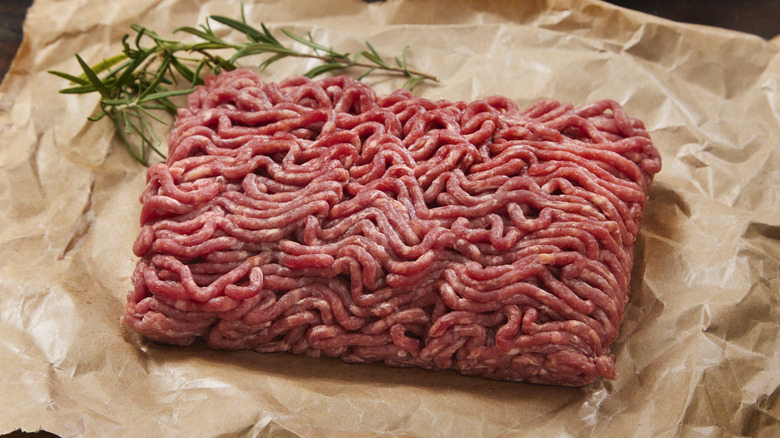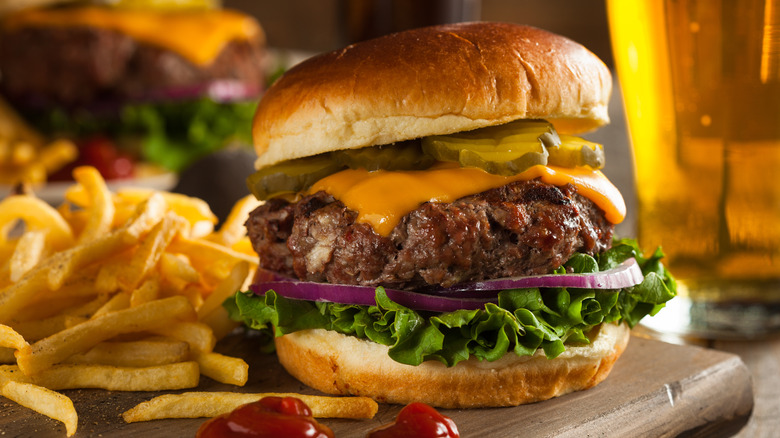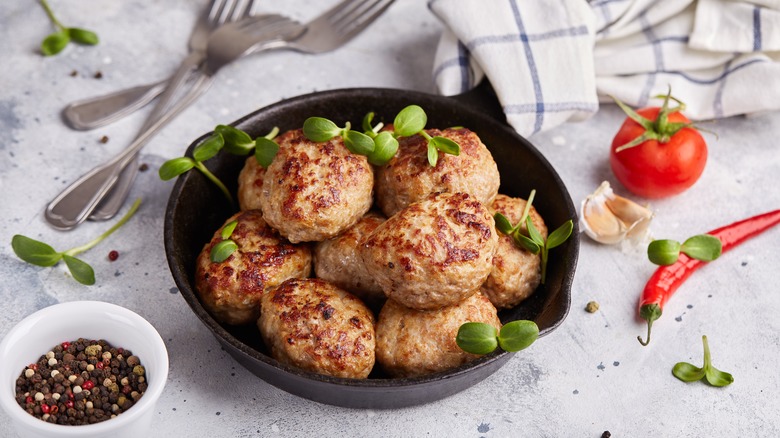Leaner Ground Beef Options For Your Diet
Despite getting a bad rap, ground beef has nutritional value. However, not all ground beef is created equal. Depending on where you shop, asking for ground beef could have a composition of around 70% lean and 30% fat. Why does fat content matter?
After cooking bacon, most people drain the grease into a container instead of dumping it down the drain. Why? Improperly flushed bacon grease can get stuck, harden, and cause clogs in your pipes. The same concept applies to your arteries. According to the Mayo Clinic, saturated fat can lead to higher cholesterol levels. Higher cholesterol levels can turn into hardened plaque, which can clog the arteries and cause serious problems for your heart and blood flow (and, therefore, oxygen) to other parts of your body. While clogged pipes are a major drag, clogged arteries can be life-threatening. Luckily for beef eaters, there are other options.
Typically, there are three additional varieties regularly stocked at your supermarket: ground chuck (80% lean), ground round (85% lean), and ground sirloin (90% or more lean). If you go to a butcher, you could even go with ground tenderloin, which yields the highest lean value. These options will help you minimize your saturated fat and cholesterol intake while capitalizing on the beef flavor and nutritional value you love. However, when transitioning from ground beef or ground chuck to ground sirloin, you may notice a blander flavor and different texture; fat adds flavor.
Lean red meat options
When cooking with leaner meat, to maximize the nutritional benefits and taste, do not overdo it with salt — and avoid overcooking. Tacos are a good option because the seasoning is the major player, and you're likely to use the same amount whether the beef is 99% or 75% lean. Unless you have committed to ground beef, your options are plentiful, even without considering plant-based alternatives.
Ground bison is an excellent beef alternative because it is nutrient-rich and extremely lean. Some issues you may encounter are its less widespread availability, higher price tag, and lack of flavor. However, I believe the taste is no more or less bland than ground turkey. Plus, it could be argued that the bison is packed with more nutritional value. Even better, good ground bison meat makes a pretty solid burger.
For another red meat alternative, look into pork. Again, stick with a leaner cut, such as the center loin or tenderloin. Lean ground pork compares nicely to other types of lean meat and can even compare more favorably in the nutrients department to ground turkey or chicken. You might not find it on the supermarket shelves, but your supermarket butcher can likely ground some up more readily than bison. Ground pork is great for meatballs and meatloaf. You can even combine lean turkey, pork, and beef for a meatloaf rich in nutrients, lower in fat, and high in flavor.
Other lean proteins
If you need something more widely available — and reasonably priced — take a look at ground turkey. Ground turkey is a great option to replace ground beef, chuck, and round. However, you have to be careful. Generally speaking, you will find three varieties at the store: 85% lean, 93% lean, and 99% lean. Like beef, not all ground turkey is created equal. If you have a choice between 85% or 93% lean ground turkey and an extra lean ground sirloin, think twice before substituting. Not only will you be going with a fattier option, but also one that is arguably less nutrient-rich. If you intend to switch from beef to turkey, your best bet is to go with 99% lean turkey breast.
In case you were wondering about ground chicken, it essentially works like the larger fowl variety regarding leanness and nutrients. Whether referring to chicken or turkey, stick with the ground breast. I like using turkey instead of beef in chili and meatloaf. Some people swear by turkey burgers, and with a good recipe, there is no reason to sacrifice the flavor or the texture of the moist, juicy qualities we love about beef hamburgers.


